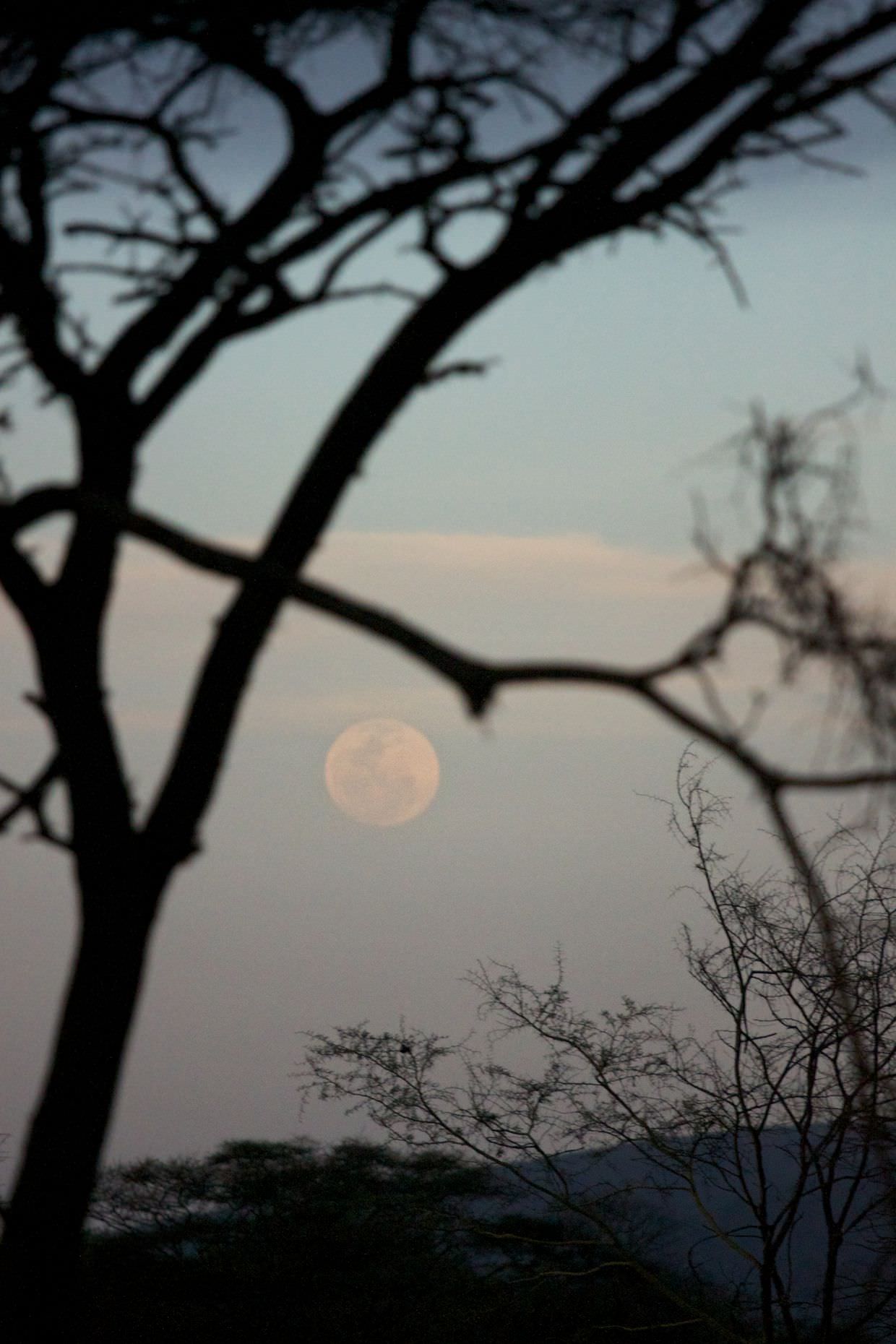Wild dog call-ups and habituation
Day 4 - Tempting bait
Playful dogs
I scan again this morning – it seems this is a task my group don’t enjoy. I don’t mind so much, I get the best seat. The dogs aren’t where we left them, but they are nearby, their signal a moving one. With power lines and heavy clouds the telemetry was tough to use; with the gain down low the signal was still everywhere – they were close, but I couldn’t pinpoint it. We gamble with a border fence patrol, nothing; we go back and try again. This time the signal is clearer, at 7, the gain’s right down, they must be close. Sylvia spots one, then two. The dogs come toward us, sending the crested francolins fleeing and squawking. And now, as is usual with this unusual pack, the dogs stop to play.
Typically, as we radio in the sighting, and as the tourists arrive, the dogs “bolt”, and there’s nothing to see. We duck away and enjoy rusks, coffee and, something original, Babs’ idea, hard boiled eggs.
Surprise cheetah
While driving back Babs shouts “stop!”, to our left a female cheetah. She’s lying down, rubbing her head in the mud. She stops and looks at us, then resumes the mud play, before walking back along the road we’d followed – I grab some photos to improve the cheetah ID kit and we leave her be.
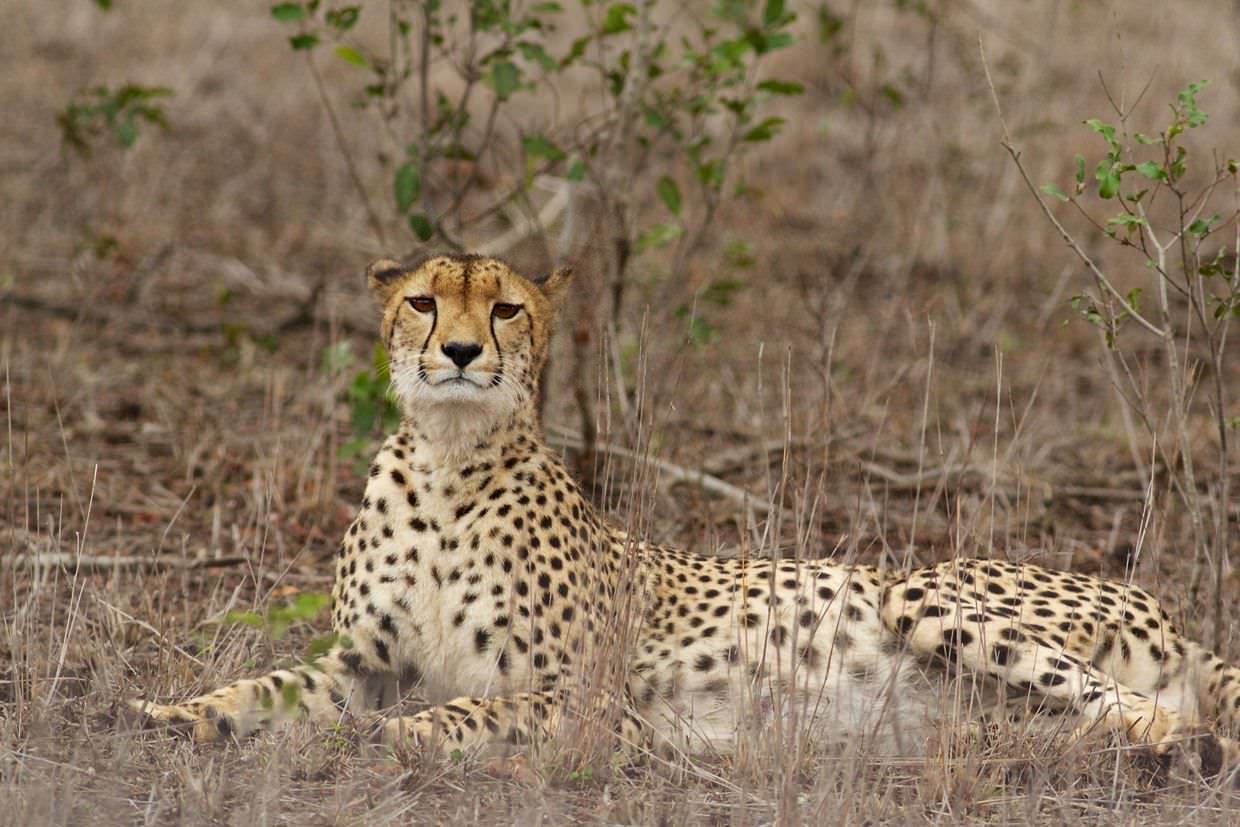

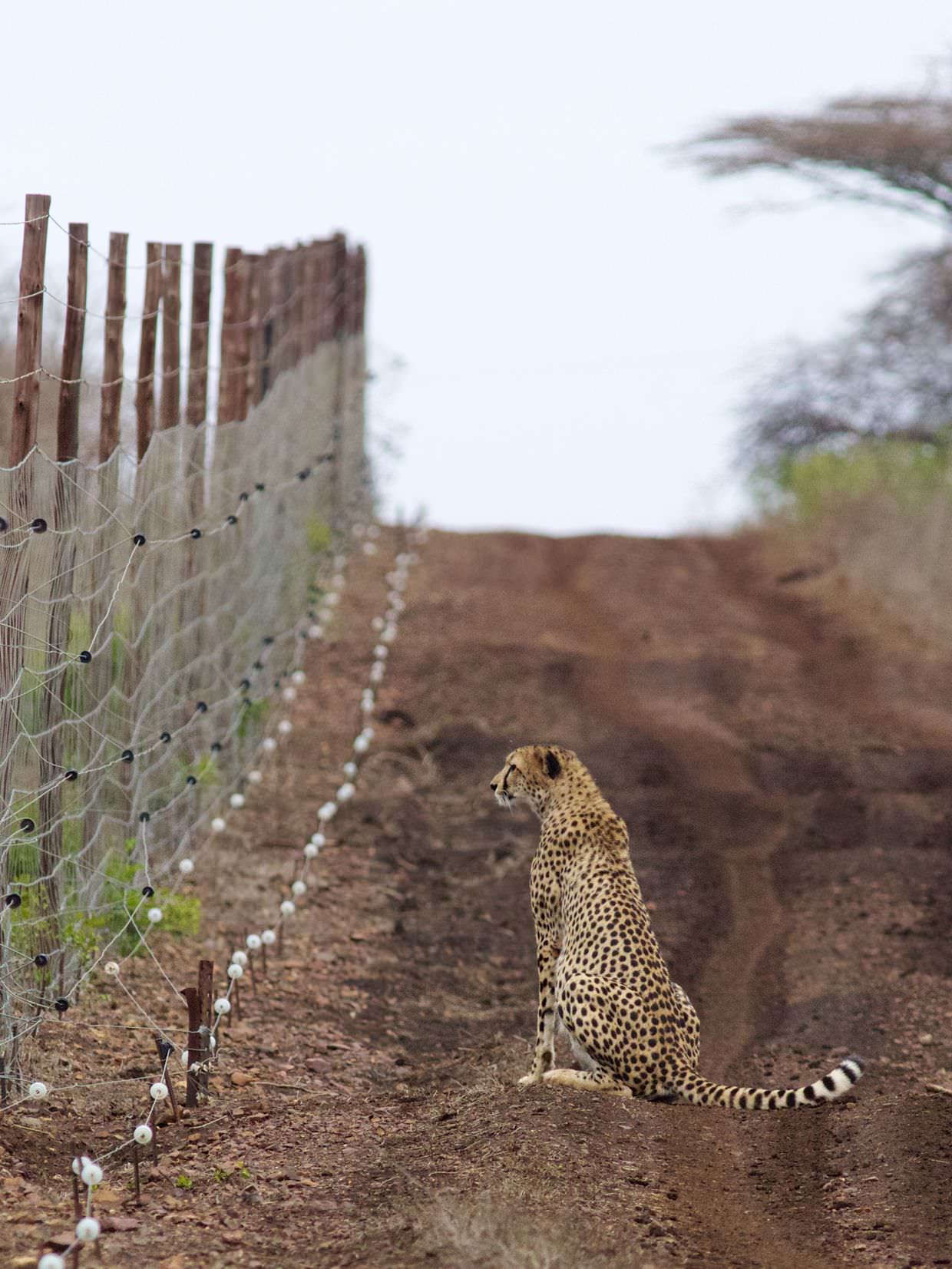
Why we are baiting the dogs
This afternoon we needed to bait the dogs. Their contraception needs renewing. Given this is a healthy, beautiful pack with good genes, and given that this is a critically endangered creature, preventing them from reproducing is abhorrent to me. I could understand if the dogs had bad genes; say the alpha male and female were siblings or cousins; but they aren’t, and their pups would greatly benefit the dwindling population. Alas; keeping and managing wild dogs is hard enough. They eat a lot of game and they often escape the reserve; more dogs means more dead herbivores, and animals are money; and it means more escapees too – which means more compensation payouts if they decide to eat a community goat. So the reserve contracepts them; the pragmatic perspective is that, “at least they have a home”. Many wild dogs are homeless, no reserve wants them.
Finding and baiting wild dogs
Dane, a field technician at ZRR, joins us to help with the baiting. I’m still scanning this afternoon; responsibility on my shoulders. We return to Bayala corner, via Rhino River, searching for the pack. It doesn’t take us long to find them; they’re resting on a game path.
Our bait is a young impala, the carcass a little old, not yet starting to smell; Dane ties a rope – one end through bone, the other to the truck, then drops it off behind. We approach the dogs slowly, dragging the impala behind us, through the dead grey grass until it snags on a tree. The dogs are nervous, they’re unsure how to respond – it looks like food, they peer inquisitively, but then they run, disappearing into the thicket. We know they fed this morning, perhaps they aren’t hungry.
We don’t give up; I continue to scan, tweaking volume, gain and direction – trying to detect imperceptible differences in beep volumes to work out their location and distance from us. For a long time their signal is a moving one, but they don’t move left or right or further away – probably playing as usual.
Eventually it shifts; the signal goes from 9 to 8, to 7, did something bump them? Are they hunting? We give chase, right to the border fence, where we find the answer. The pack is surrounding a lone male impala, its head is stuck between the electric fence. The dogs have forced it into the electrics where it’s being jolted with thousands of volts every 10 seconds, it twitches every time. One dog tries to grab it but gets a shock too; they choose to wait it out, lying down nearby as the impala is tortured.
It writhes and wriggles and breaks free. But he’s weak. It desperately sprints along the fence line and the pack give chase. We follow and find a similar scene; the impala is again trapped, its legs caught in the fence, its body writhing with every shock; the dogs resting nearby. Zap, zap, every struggle is hard to watch, and as time goes by the impala fights less and less, until it stops moving; electrified to death – it got the chair, natural predators, an unnatural death. An easy kill for the dogs, its understandable why they like this corner.
The dogs definitely aren’t hungry, they return to rest and play. We give up on baiting them tonight, but this fresh impala will make the perfect bait tomorrow morning. Dane retrieves it from the fence and loads it onto the truck, its empty eyes staring at us, head propped up against the tailgate. We drive home in the rain.
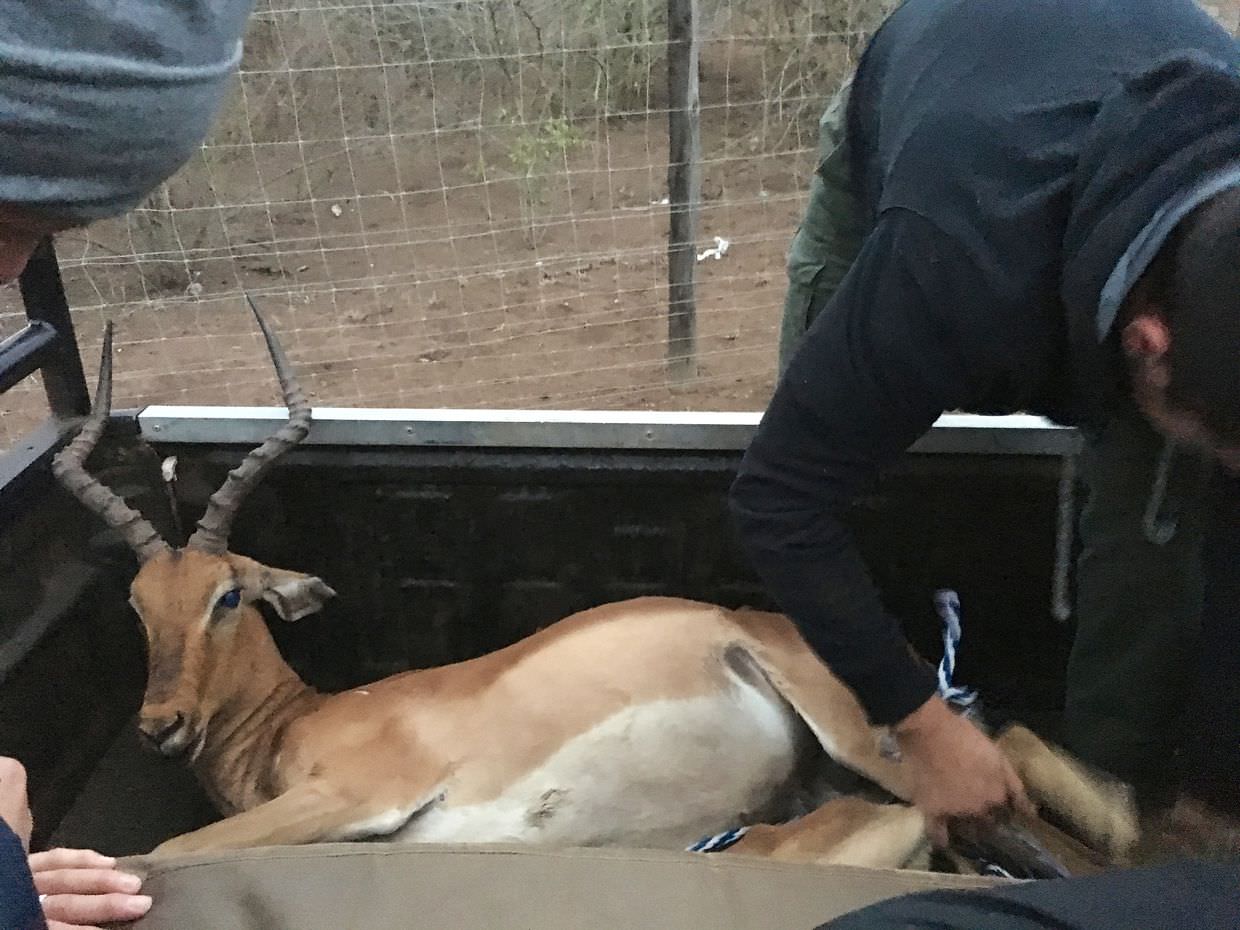
Day 5 - Another bait attempt
This morning we left at 3:45am, the overcast clouds had cleared; it’d be a sunny day. We left with two impala in tow; after last night’s unsuccessful baiting attempt we’d try again. The truck was probably covered with ticks by now. With Dani and Dane upfront, we hurtled south to Bayala corner, trying to reach the dogs before they left on their morning hunt.
I’d be scanning again, my fellow vollies dubbed me “scan man”, which meant I had the responsibility of pointing us in the right direction. By our arrival the dogs had gone, a faint signal in their wake, it pointed at 12 o’clock, along the fence line. We followed and it quickly grew stronger, 2 o’clock, 3 o’clock, “slow down”. While I’m pinpointing with the faintest of beeps and the most delicate of gain tweaks, Sylvia spots them; all five running past us, back the way we came, and soon out of sight again.
Again I needed to work the telemetry; where were they going? What direction? How far away? Where should we bait them? At the corner we picked up a strong signal for WDF2, and found her ahead of us, besides the electric fence. Now was our chance. Dane hopped off the back, pulled out the male impala and tied it to a tree. She watched us, curious, nose sniffing the air. We backed up and waited.
This dog was hesitant; they hadn’t been baited in a year, and she seemed unsure. We reversed further and it drew her in, soon she was feeding. It must’ve tasted good; quickly she left to find the others, and within a few moments the pack were feeding.
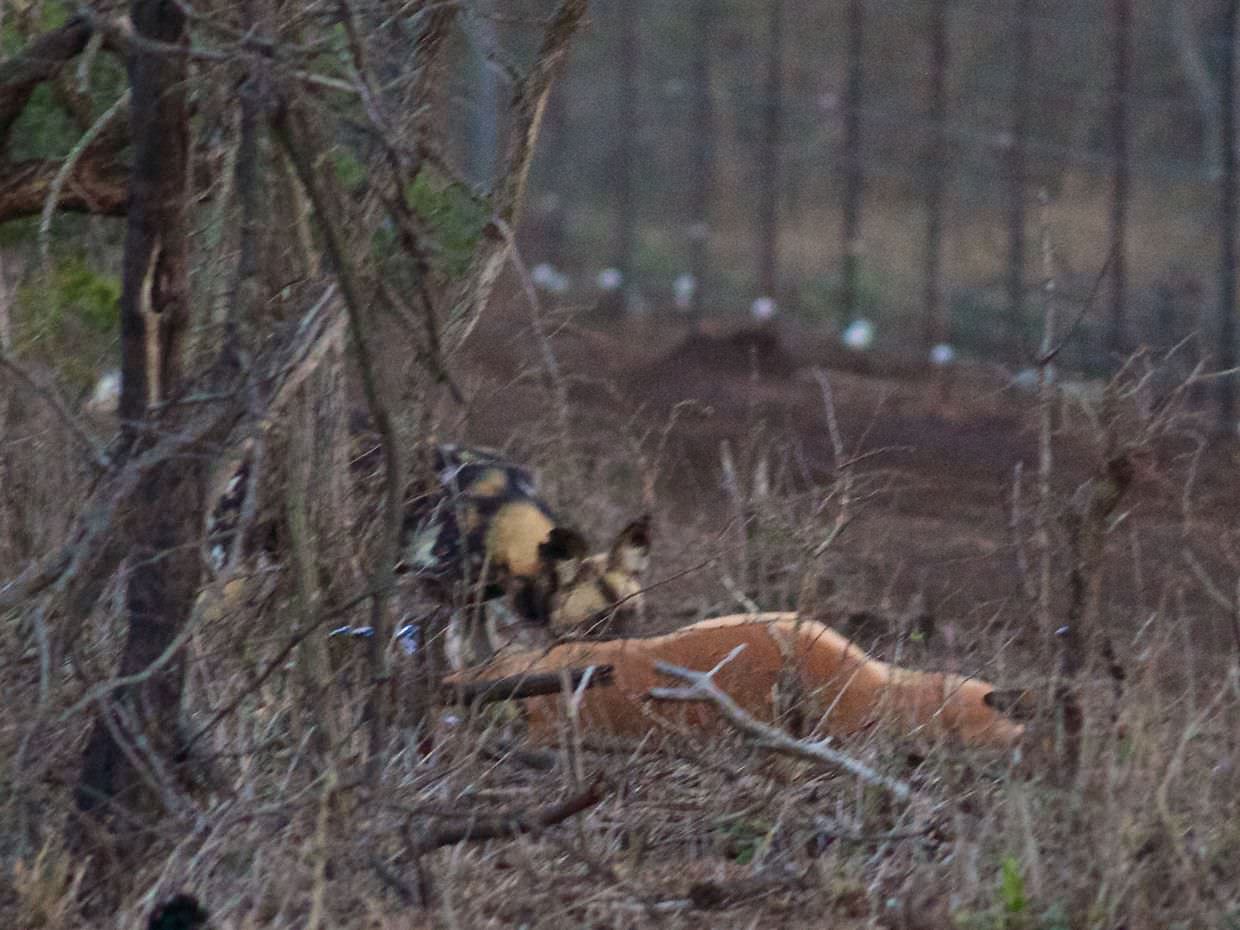
The habituation is to make darting the dogs easier, which means getting a truck to within 25m of them. As they fed Dani turned her engine on and off, revved the engine, and edged closer. The aim was to make them feel comfortable with the truck nearby.
It didn’t take them long to finish, and the pack quickly resumed their usual activity; play. I’ve never seen dogs play just as much as these five. They leap about, wrestle on their hind legs, nip each others heels, grab each other in headlocks, twitter with delight and run around in circles – tag is their favourite game. They’re a wonder to watch.
Our job was done by 7am; we had a quick coffee, some rusks, a tick removal session and returned to camp – all desperate to shower, do some laundry and clean the truck; a perfect time for the water to stop.
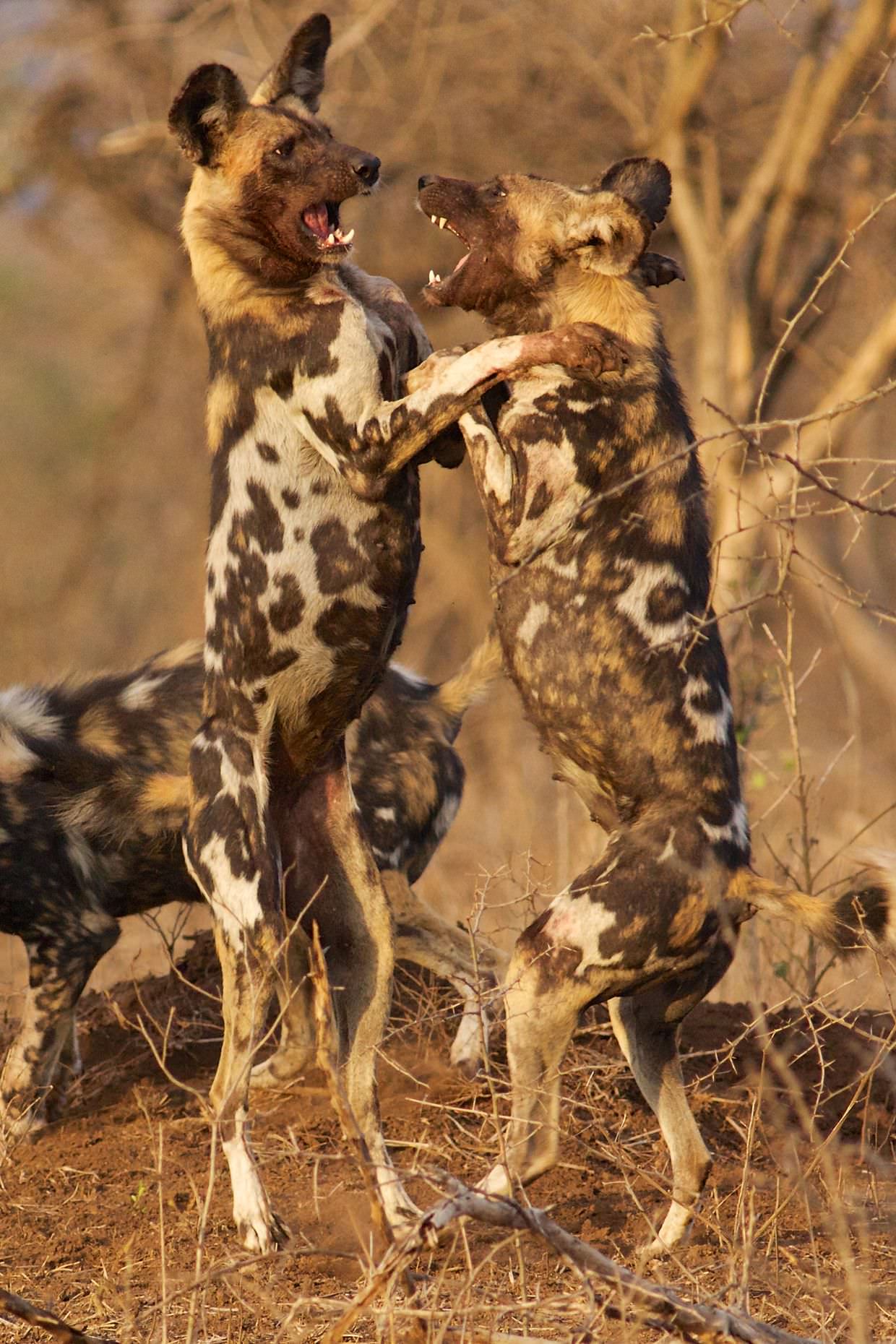
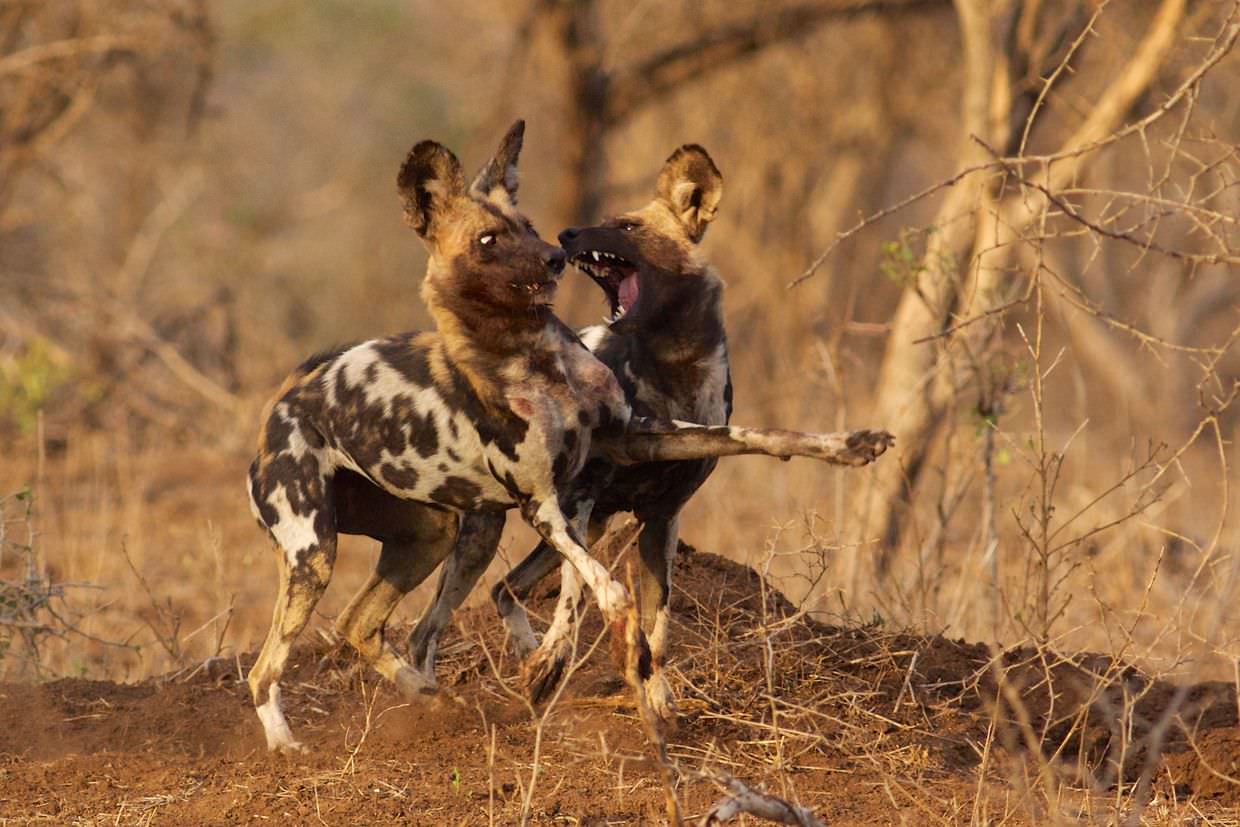
A brief afternoon of camera traps
In the afternoon we focused on camera traps, travelling the length of the reserve to replace SD cards and batteries. The closest was besides camp, we’d left an unused bait beside a trap to see what was nearby – the bait was eaten but the camera wasn’t working, and the tracks had been washed away. With bitter disappointment we tugged at the rope holding the carcass to untie it, holding our breath from the stench of death. Other cameras were on cheetah scent marking trees and we traversed bumpy unused roads to reach them.
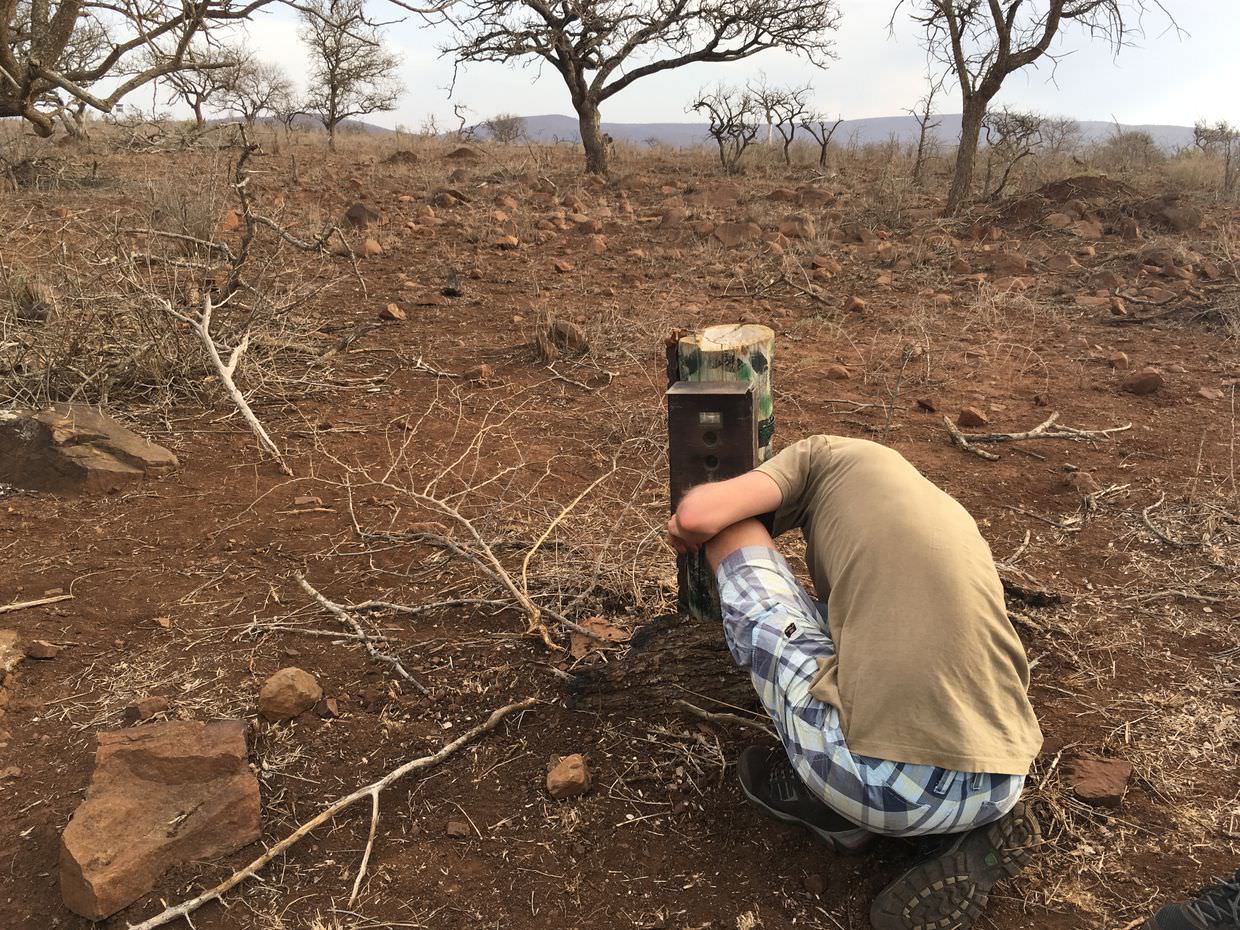
The weather when we left was beautiful, a very hot sun with a clear sky – shorts and t-shirt attire. As we approached camera 2 things had changed; the south-westerly wind was hot, but above it, from another direction, a cold wind brewed and with it came large dark clouds. Showers threatened, huge globules of water splattered briefly, thunder rumbled and while changing camera 3 lightning lit up the sky. “You saw lightning? Aww no”, Dani said, that’s the trigger, “we have to go home guys”, it’s too dangerous being on the back of an open metal truck in a thunderstorm.
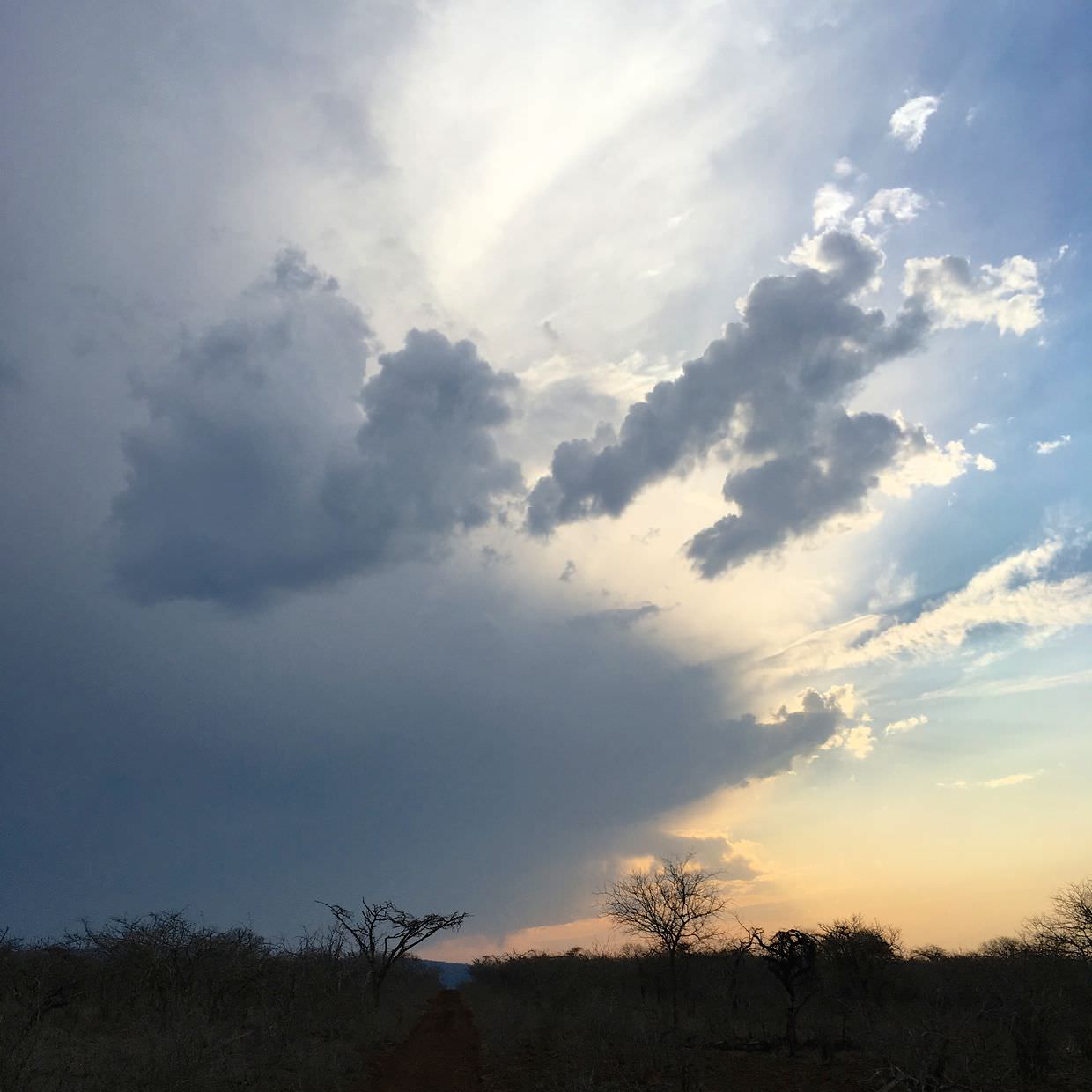
We rushed back, the wind at our backs, a curtain of rain behind us. Ahead, the full moon came up above the mountains – a magnificent sight, visible until the storm consumed it.
